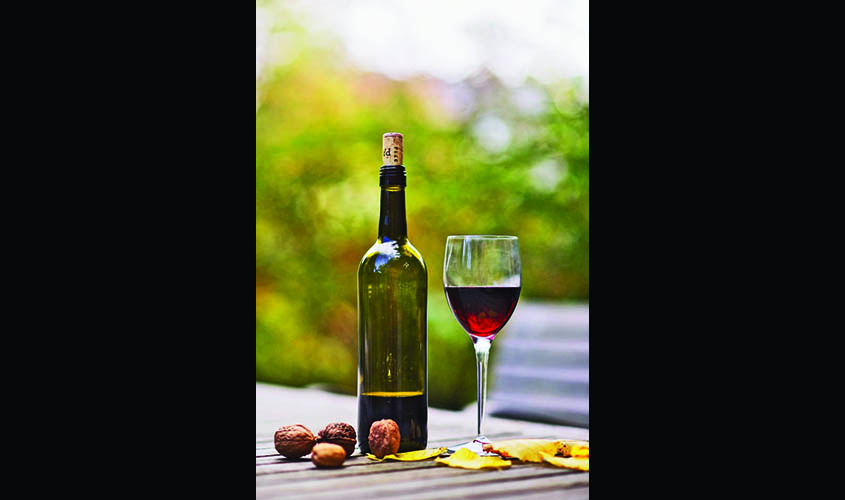We’re all drinking a lot more wine, and from a pleasing array of countries. The wine sector in India is a market to watch out for. The excessive exposure to new cultures, Western concepts, overseas education and rapidly changing demographics are driving wine consumption in the country. India, with its young population, changing trends and an understanding of status choice are becoming parallels to most Asian markets where there is an acceptance and growing preference for wine, especially in the upper and middle classes.
If we see the consumption in recent years, it has increased tremendously
Over the past couple of years, there has been an interesting and counterintuitive trend in the tourism industry. More and more industry leaders around the world are embracing wine. Owners now invest time and efforts while selecting wines for their hotels. Today, in our industry we are taking the initiative to understand different varieties of wine, countries of origin and regions. There’s another trend in the market for drinkers who are vegans. With social trends and millennial preferences, consumers are becoming aware of vegan wines and a lot of vegan-only and vegan-friendly wines have been introduced in the sector.

Well-travelled millennials have also impacted the popularity of wine in the hospitality sector. Wine is something that has come from different countries and people have preferred its taste. And now it is India’s young crowd that is showing an interest in the beverage.
In the context of hospitality, wines are making their way into functions, events and marriages, and are a particularly popular gift for status-conscious Indian consumers. As wine is seen as a sophisticated and stylish drink compared to whisky, scotch and rum, it has gained humongous popularity in the market.
Some facts from Indian Wine Academy: There are more than 300 wine importers in India and the number is growing every year. India has its own domestic industry too, with Sula Vineyards, Indage and Grover Vineyards among the top Indian vineyards and wineries. Collectively, they control 90% of the market and their products are perceived as “value for money”.
I have witnessed tremendous growth of the Indian wine market over the last decade. Not just in volume but also in variety, quality and consumer base. People now have a growing preference for popular types like Chenin Blanc, Sauvignon Blanc, Cabernet Sauvignon and Shiraz. We are now seeing grapes like Viognier, Riesling, Chardonnay, Sangiovese, Nero d’Avola and more.
Techniques of making wine have evolved too, allowing winemakers to make both simplistic wines for newcomers and complex ones for the more experienced drinkers.
Another wine trend that gained traction this year is the sparkling wine trend. It has grown across categories from method champenoise style to proseccos types and simple frizzante.
The tourism industry has also seen a change in how people wine and dine. Indians have always paired their food with lager. But with the involvement of gastronomy experts, influencers and upmarket restaurants across the country, perceptions have begun to change about the suitability of Indian cuisine with wine. However, with a wide range of variety and diversity of the cuisines in India, pairing wine with food can get a little complex. There is a need to communicate that there’s an exhaustive list of wines that will pair beautifully with Indian food. But one’s tryst with wine needs to be continuous and experimental, and one should allow their palate to guide them as regards the taste of wine.
The wine industry in India is in the developing stage, and it requires people with commitment and passion to take it to the next level. It needs time to get better, for the grapes to mature with time and attain the right flavours. So tourism industry needs to educate itself.
We have so many homegrown winemakers in India. We should focus on developing them and provide them with the best facilities at wineries and not factories. We also need consistency; the storage conditions of the distributors need to improve. If these things are taken care of, then the quality of wines in terms of range will not be limited.
To conclude, wine tourism is a massive business not only for local wineries, but also for the region as a whole.
People are beginning to understand the concept of wine tourism, but it is important that the industry receives repeat visitors so that we can gain customer loyalty and help in providing better experiences.
In the recent years wine tourism has grown in leaps and bounds and is continuing to grow. Further growth can be achieved through purposeful event planning at wineries in terms of scheduling fun and educational activities.
Wineries and wine trails should not be seen in isolation from the rest of the region when owners are planning their marketing strategies. They would likely benefit from collaboration with other industries that are present in the region (i.e. recreational tourism, music events, etc.) to help encourage repeat tourism to the area for optimal social and economic impact.
The author is managing partner, Treehouse Hotels

